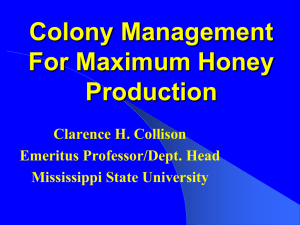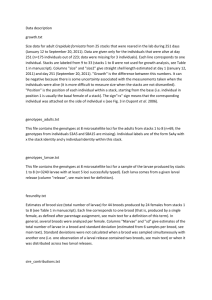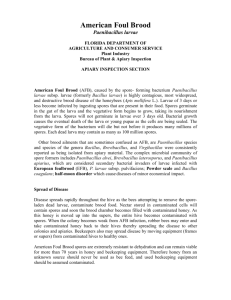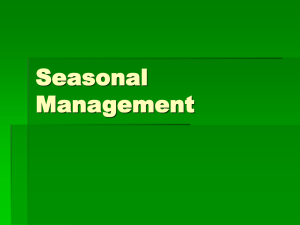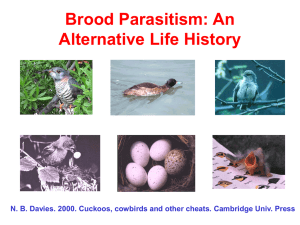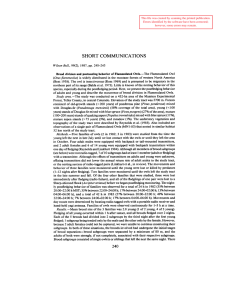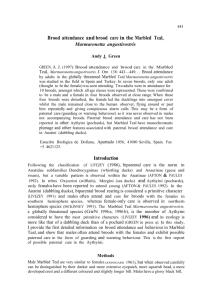Frame Reading
advertisement
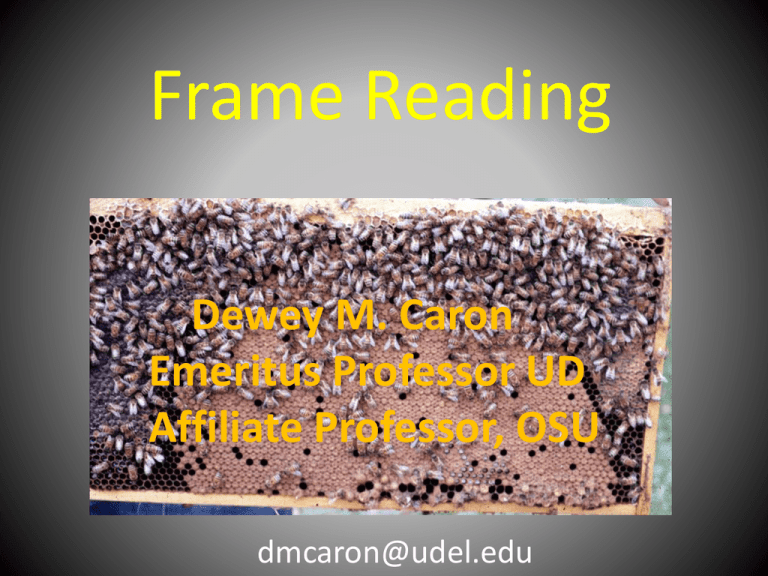
Frame Reading Dewey M. Caron Emeritus Professor UD Affiliate Professor, OSU dmcaron@udel.edu Frame Reading • IDENTIFY WITH APPROPRIATE LETTER: Capped Brood; Drone Brood; Honey; Nectar; Pollen (likely position); Eggs (or where to look); Queen Cups/Cells. • IS BROOD HEALTHY? IS COLONY QUEENRIGHT & BROOD PATTERN OK? H CB P N Q Cups DB E Frame Reading • What if there are NO EGGS present ? □ no queen present □ new virgin/newly mated queen present – not laying eggs yet □ X look on another frame – this one filled with cells of mostly capped brood □ end of season or drought conditions or pollen resources no longer available □ bees preparing to abscond (or swarm) Frame Reading • What if no pollen evident? □ no young brood to stimulate pollen foraging □ numbers of cells filled with fresh nectar X□ no space – look on another frame especially frame at edge of brood sphere □ pollen dearth or drought or heat spell □ bees preparing to abscond (or swarm) Frame Reading • What if there is no drone brood (or queen cells) on any frames? X□ end of foraging season X□ pollen dearth or drought or heat spell X□ look on another frame – no space here X□ look again at margins of additional frames and at comb between boxes X□ not rearing queens (cup presence OK) because IS this easier to read? Fall or Spring reading? Frame Reading - 2 Spring frame – “read” 3 cycles • LOOKING FOR EVIDENCE OF QUEEN • Do you need to see the queen? • □ yes Yes Because ________________ X • □ no Why Not? ___________________ EGGS • What is “test” if unsure queen present or not? __________ Instead of looking for the queen, you should… □ see capped brood □ see open larval brood X□ see eggs (should be 1/cell, rarely 2) □ see developing queen cells □ evaluate the brood pattern/healthfulness □ determine if environmental conditions are poor □ transfer frame of open brood from another hive Frame Reading 3 What else should you read on the frame? □ Area being reserved for brood(cleaned & ready or not) □ nectar filled cells in brood area or area to top/sides of brood sphere □ fresh pollen in cells vs stored (glazed) pollen cells; moldy pollen □ queen cups or queen cells (i.e. occupied with eggs/brood or capped) □ condition of drawn cells, amount of drone brood cells □ age of drawn comb (time to exchange?) □ HEALTH of brood (if not healthy probable reason _______________) □ overall brood pattern (is pattern ‘shotgun’/scattered/ “missed” cells) □ placement of eggs in cells with eggs □ drones in worker cells (drone layer; laying workers); high drone #s □ normal looking cappings over brood & honey; drone cells with raised cappings □ dead brood (disease, chilling, pesticide kill, genetic issues) □ mites present? □ evidence of pests (mice; SHB; wax moth; other Frame Reading 4 More information

